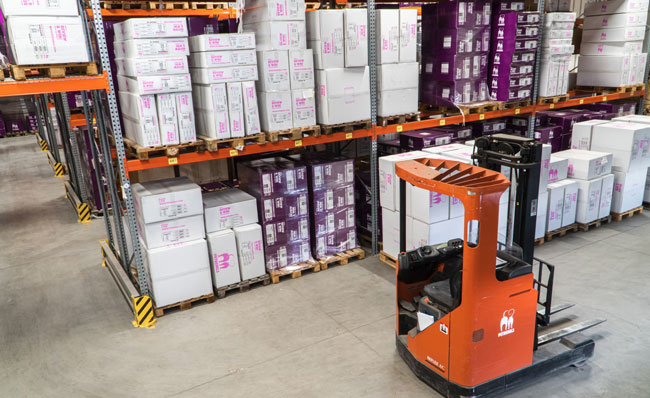In today’s fast-paced world, the manufacturing and inventory landscape is undergoing a dramatic transformation, driven by the advent of modern software solutions. These tools are not just about keeping up with technology trends; they’re about setting new standards for efficiency, accuracy, and customer satisfaction. For instance, platforms like Shopify are integral in showcasing how e-commerce integration with manufacturing can elevate a brand’s reach and operational capacity, that’s a game-changer for businesses looking to scale in the digital age. In the heart of this evolutionary leap is the concept of digitalization, where everything from the assembly line to the checkout process is interconnected, offering a seamless operational flow.
Smoothing out the kinks: How advanced software is making inventory management a breeze
Gone are the days when inventory management was a cumbersome process plagued with inaccuracies and constant manual updates. Today’s advanced software solutions offer a plethora of features designed to automate and streamline these processes. Real-life examples abound of businesses that have turned their inventory nightmares into a well-oiled machine. Such software not only improves efficiency but, when integrated with platforms like Shopify, enables businesses to effortlessly manage their inventory across multiple sales channels. This capability significantly reduces the risk of stockouts or overstock situations, ensuring that businesses can meet their customer’s demands promptly.
Moreover, the advent of cloud-based systems has revolutionized the way data is stored, accessed, and analyzed, delivering real-time insights into inventory levels, trends, and forecasts. This instantaneous access empowers businesses to make informed decisions at a moment’s notice, responding to market shifts with agility. The integration of these systems with intuitive dashboards and reporting tools further enhances the decision-making process, equipping managers with the data they need to optimize inventory turnover and reduce holding costs, thereby boosting the bottom line.
Beyond the assembly line: The role of AI in streamlining manufacturing processes
The introduction of Artificial Intelligence (AI) in the manufacturing sector is nothing short of revolutionary. From substantial reductions in production times to enhanced quality control, AI is at the forefront of the manufacturing evolution. Predictive maintenance, powered by AI, is a particularly exciting development, allowing for the anticipatory scheduling of maintenance activities, thus avoiding unexpected downtime. Perhaps most intriguing is how AI can seamlessly integrate with platforms like Shopify, enabling smarter manufacturing that directly correlates with e-commerce trends and demands.
AI-driven systems are also transforming the landscape of quality assurance, with intelligent algorithms capable of detecting defects and inconsistencies at a speed and precision that eclipse human ability. This reduces waste and ensures that only products meeting the highest quality standards reach the market. The domino effect of this advancement stretches into customer satisfaction and brand reputation, showcasing how AI goes beyond manufacturing optimizations to become a pivotal element in a brand’s overall value proposition.
Staying ahead of the curve: Why adopting cutting-edge tech is crucial for manufacturing firms
In a world where consumer expectations are constantly evolving, the ability to adapt and innovate quickly is more critical than ever. Technologies such as the Internet of Things (IoT), AI, and Robotics provide a competitive edge, enabling manufacturers to offer the speed, customization, and quality that today’s consumers demand. For small and medium-sized manufacturers, the adoption of these technologies can seem daunting. Yet, the potential rewards in terms of efficiency, cost savings, and customer satisfaction are immense. Moreover, the integration of these technological advances with e-commerce platforms facilitates a direct and agile response to market changes.
From chaos to clarity: Case studies on how modern software solutions are transforming businesses
The impact of modern manufacturing and inventory software on businesses is profound. Take, for instance, a small manufacturing firm struggling with inefficient production schedules and chronic stock issues. After implementing a comprehensive software solution, not only did their production efficiency skyrocket, but they also achieved remarkable cost savings and significantly higher customer satisfaction levels. These software solutions offer an unparalleled advantage, especially when integrated with e-commerce platforms like Shopify, enabling businesses to streamline their operations from manufacturing to online sales.
The green revolution: Eco-friendly manufacturing and inventory practices powered by technology
Amidst the technological revolution in manufacturing and inventory management, there’s a growing emphasis on sustainability. Modern software solutions are at the forefront of this green revolution, enabling businesses to adopt more eco-friendly practices effortlessly. From reducing waste and energy consumption to optimizing resource use, technology plays a pivotal role in promoting sustainability. Moreover, e-commerce platforms are increasingly spotlighting eco-friendly products, creating a unique opportunity for manufacturers to leverage technology not only for efficiency and cost savings but also for a healthier planet.
In conclusion, the future of manufacturing and inventory management is undeniably digital. Embracing modern software solutions and technology is not merely an option but a necessity for businesses aiming to thrive in this new era. The benefits are clear: enhanced efficiency, cost savings, superior customer satisfaction, and a smaller ecological footprint. As we look forward, the synergy between manufacturing innovations and e-commerce platforms like Shopify will continue to define the landscape, providing exciting opportunities for businesses ready to take the leap into the future.



Leave a comment
Have something to say about this article? Add your comment and start the discussion.